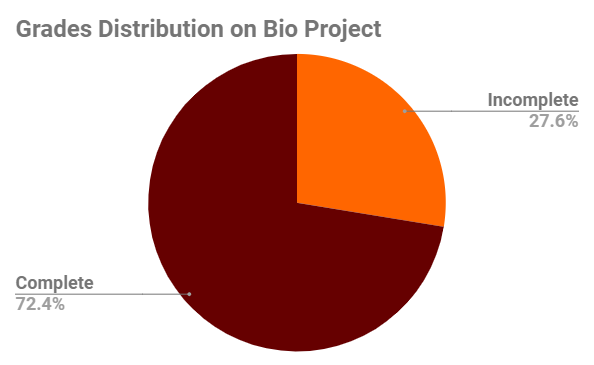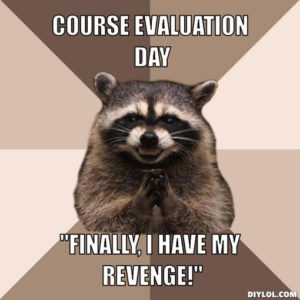 I have graded all of the Professional Bio projects. This post accomplishes the following goals:
I have graded all of the Professional Bio projects. This post accomplishes the following goals:
- Tells you about the feedback strategy I used.
- Provides overall feedback on the project.
- Outlines revision activities you can complete if you are not happy with your grade.
Please read the information carefully and note the related dates. If you have questions about grading in this course, consult these resources:
The Feedback Strategy for the Project
I recorded a video for each of you that gives feedback on your project, explaining what I am seeing as I look at the document and talking about how you can improve it.
This is the first time I have tried video feedback. Please watch the entire video as I give you suggestions for improving that will help with future projects. Even if you have a complete on the assignment, there will be useful information in the video. Since I have not used video in this way previously, I would love feedback from you. You can leave a comment on this post that tells me what your thoughts are on this strategy.
I need to share a few details about these videos:
- The video feedback files are mp4s and should play in Canvas. All you need to do is click on the link in the comment area on the assignment. The video has audio, so you may want to use your earbuds when you listen.
- I may have mispronounced your name. If so, I apologize. Please let me know how to say your name so that I get it right the next time.
- You may well hear background noise in the videos. Some of you will hear the dogs bark. One of you will hear the dog flinging himself into the door because he was angry that I shut him out. One of you will hear me gasp when my sister suddenly shoves a piece of paper into my view (I didn’t hear her come in the room and she scared the tar out of me). Several of you will hear my fan, which I forgot to turn off. Apologies for all that.
Overall Feedback for the Class
- Complete bios: Most of you did a good job following the instructions in the assignment by including all of the required information.
- Work on document design: Many projects could be improved with more attention to document design. In particular, remember the design elements from the CRAP infographic and the F-shaped reading pattern.
- Focus on showing: The details in your documents should show the reader what you want to communicate. You may have had a teacher in the past talk about the difference between showing and telling in your writing. A Stanford technical writing course explains it this way:
[U]se specific examples and stories. In writing, we call this show, don’t tell. Don’t just say you are committed to solving global health problems, show an example of this. Readers don’t remember abstractions. They remember stories.
- Help from the Writing Center: Remember that anyone can visit the Writing Center in the library for help with projects for the course. Writing Center tutors can help you strengthen your content as well as work on document design and issues with phrasing, grammar, or punctuation. You can read more about the Writing Center and make an appointment at https://lib.vt.edu/spaces/writing-center.html.
Revision Activities for the Analysis Project
I have reopened the assignment so that those of you who want to revise can improve your project. Follow the guidelines below to resubmit your work.
- If I made a mistake or there is a technical issue with your video
Send me an email message or a private message in Canvas with the details. I’ll fix it.
- If there were problems with the content or design of your bio
Revise your project to improve your work, adding whatever is missing and/or tweaking the design. Resubmit your project, and I will regrade your work.
- If you did not submit your work at all
It is too late. Be sure to turn in all the remaining projects if you want to pass the course.
- If something else is going on
Send me an email message or a private message on Slack with the details. I’ll see what I can do to help you.
Suggested Revision Dates
It would be unfair to ask for revisions before Spring Break. I’m sure many of you have plans (or at least dreams) of getting out of Blacksburg. Likewise, I take time off during break, so I assume you do too. As a result, I would like to give you a longer period of time to get revisions in.
By 11:59PM on March 16, aim to submit your revision. It will help you to have the bio done before we dive fully into the second half of the term.
If you need more time, that is fine. The bio assignment is open until the last day of classes. You do not need to contact me. Realize however that if you put off revising until the last day, you may run out of time. You cannot revise after the last day of classes.
Last updated on Thursday, February 22, 2018


 If you want a positive response to your proposal, be up front with the key information. Don’t keep your readers in suspense, waiting for the details.
If you want a positive response to your proposal, be up front with the key information. Don’t keep your readers in suspense, waiting for the details. 
 Since it’s the middle of the term, I want to invite you to tell me how you feel about the course so far. Here are three ways to respond:
Since it’s the middle of the term, I want to invite you to tell me how you feel about the course so far. Here are three ways to respond: 
 We all rely on grammar and style checkers to help us find the small errors in our writing. Anyone who has had autocorrect go wrong, however, knows that grammar and spell checkers are not necessarily accurate. Sometimes (as in the case of the unicorn-riding police officer in the image on the right) these tools can change our messages to say things we never intended.
We all rely on grammar and style checkers to help us find the small errors in our writing. Anyone who has had autocorrect go wrong, however, knows that grammar and spell checkers are not necessarily accurate. Sometimes (as in the case of the unicorn-riding police officer in the image on the right) these tools can change our messages to say things we never intended. I have graded all of the Professional Bio projects. This post accomplishes the following goals:
I have graded all of the Professional Bio projects. This post accomplishes the following goals: 